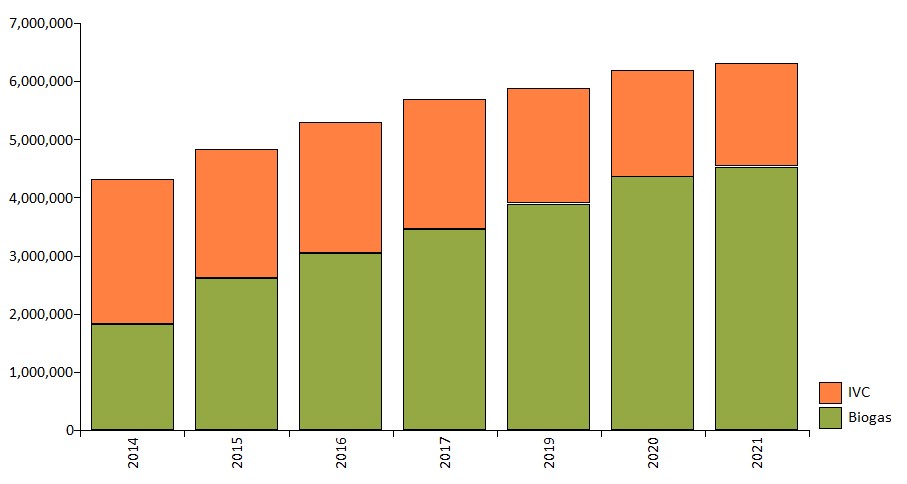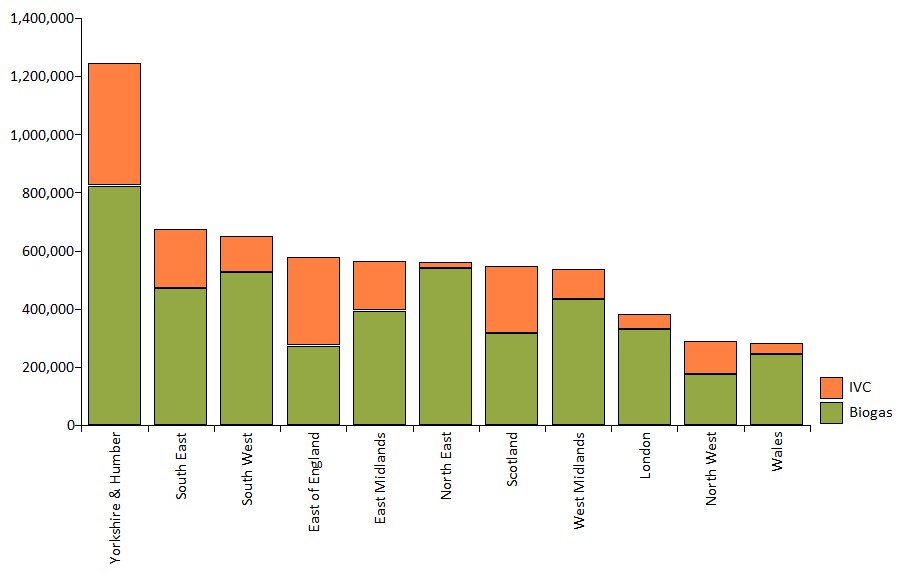Biowaste Processing Update – Summer 2021
Processing capacity for food waste across the UK has exceeded 6 million tonnes in the past year, with Anaerobic Digestion the dominant technology, though with growth rate slowing (see Chart 1). This may be a consequence of the Coronavirus pandemic and lockdowns as much as anything else, so should not necessarily be seen as evidence of a market slowdown.
Chart 1: Animal Byproduct Food Waste Processing Capacity (UK)

The Yorkshire and Humber region has witnessed a rapid expansion of facilities and total capacity in recent years, with the exception of the latest year. The total processing capacity in the region currently stands at just over 1.2 million tonnes (see Chart 2).
Chart 2: Animal Byproduct Food Waste Processing Capacity (Yorkshire & Humber)

Indeed, this expansion has led to Yorkshire & Humber having the highest level of food waste processing capacity across the whole of the UK, with almost twice as much capacity as the South East (second place in the rankings) (see Chart 3).
Chart 3: Regional Distribution of Food Waste Processing Capacity

The near-doubling of food waste processing capacity over the past decade has been the fruit of targeted efforts, underpinned by binding climate commitments, to reduce biodegradable waste heading to landfill. Over this time, Anaerobic Digestion / Biogas (“AD”) has been the big winner, supported by Government promotion and financial incentive, allowing for the recovery of electricity from the combustion of food-derived methane. Although a long-established technology across Europe, AD was not in common use as a means of treating food waste in the UK until it was adopted as the technology of preference in 2009 by the then-Government versus the existing method of In-Vessel Composting (“IVC”).
Over subsequent years, AD sites opened across the country, chasing generally the same feedstock as their IVC counterparts (although IVC offered the unique selling point of being able to receive a mix of food waste and green waste). IVC sites declined in number, many switching over to AD technology, and so the number of AD sites rose. Presently, there are more than twice as many AD sites than IVC facilities, with almost three quarters of (animal byproduct-contaminated) food waste being treated by the AD route.
